Focke-Wulf Fw 190 V1
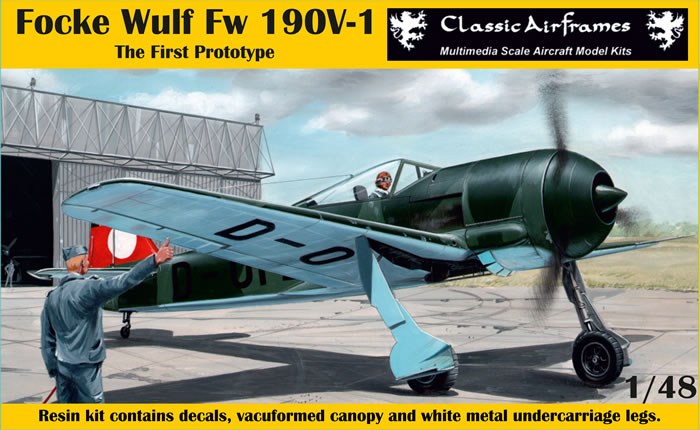
Classic Airframes, 1/48 scale
S
u m m a r y |
| Catalogue Number: |
Classic Airframes Kit No. R8-009 - Fw
190 V1 |
| Scale: |
1/48 |
| Contents and Media: |
30 parts in grey resin; three parts in white metal; two parts in clear vacform plastic; a decal sheet covering two options for the Fw 190 V1 airframe. |
| Price: |
USD$85.00 via Paypal to jb0262@aol.com
Please include your delivery address when ordering via PayPal
Free shipping to CONUS. UPS shipping with tracking will apply to international orders. |
| Review Type: |
FirstLook |
| Advantages: |
Restrained surface
featuring crisply recessed and very fine panel lines; engineered with a minimum of casting plugs so cleanup is quite straightforward; high quality casting with no obvious imperfections or warpage in my sample; small parts count and simple breakdown makes this model appropriate for modellers with average experience. |
| Disadvantages: |
You'll need to source your own harness straps. |
| Recommendation: |
A very nice looking kit of this Wurger pioneer, and an ideal project for Fw 190 fans or anyone considering their first resin model. |
Reviewed by Brett Green

Eduard's 1/48 scale Fw 190 A-3 is available online from Squadron.com
The Focke-Wulf Fw 190 was a German single-seat, single-engine fighter aircraft designed by Kurt Tank in the late 1930s and widely used during World War II.
Along with its well-known counterpart, the Messerschmitt Bf 109, the Focke-Wulf 190 Würger became the backbone of the Luftwaffe's Jagdwaffe (Fighter Force).
The first Fw 190 to fly was the V1 prototype.
At the time, the use of radial engines in land-based fighters was relatively rare in Europe, as it was believed that their large frontal area would cause too much drag on something as small as a fighter.
Tank was not convinced of this, having witnessed the successful use of radial engines by the U.S. Navy, and felt a properly streamlined installation would eliminate this problem. The hottest points on any air-cooled engine are the cylinder heads, located around the circumference of a radial engine. In order to provide sufficient air to cool the engine, airflow had to be maximized at this outer edge. This was normally accomplished by leaving the majority of the front face of the engine open to the air, causing considerable drag.
During the late 1920s, NACA led development of a dramatic improvement by placing an airfoil-shaped ring around the outside of the cylinder heads (the NACA cowling). The shaping accelerated the air as it entered the front of the cowl, increasing the total airflow, and allowing the opening in front of the engine to be made smaller.
Tank introduced a further refinement to this basic concept. He suggested placing most of the airflow components on the propeller, in the form of an oversized propeller spinner whose outside diameter was the same as the engine. The cowl around the engine proper was greatly simplified, essentially a basic cylinder. Air entered through a small hole at the centre of the spinner, and was directed through ductwork in the spinner so it was blowing rearward along the cylinder heads.
To provide enough airflow, an internal cone was placed in the centre of the hole, over the propeller hub, which was intended to compress the airflow and allow a smaller opening to be used. In theory, the tight-fitting cowling also provided some thrust due to the compression and heating of air as it flowed through the cowling.
This revolutionary concept paired with the sometimes troublesome BMW 139 14-cylinder two-row radial engine gave the Fw 190 V1 its unique and distinctive appearance.
The BMW 139 was replaced by the BMW 801 engine in later prototypes and production A, F and G series Wurgers.
While later prototypes and all production aircraft were fitted with electrically powered landing gear, the V1 had a conventional hydraulic system.*
* Historical summary adapted from Wikipedia
Classic Airframes sadly set below the horizon nearly ten years ago, in June 2009.
However, Classic Airframes' founder and owner, the famous "Uncle Jules" Bringuier, left a glimmer of hope that we might see Classic Airframes back again in the future. To quote the man himself when announcing Classic Airframes' hiatus: "This does not mean that Classic Airframes is out of business, it simply means that for the time being, as previously stated, I will not issue any new kits until the economic climate warrants it."
Well, it seems that the economic climate warrants at least a limited run multimedia kit, and following in the footsteps of previous CA releases, this one is a very interesting subject.
Classic Airframes emerges from its hibernation with a 1/48 scale Focke-Wulf Fw 190 V1.
The kit comprises 30 parts in grey resin, three parts in white metal, two parts in clear vacform plastic, and a decal sheet covering two options for the Fw 190 V1 airframe.
The resin parts are beautifully cast. I cannot see any imperfections or warpage on my sample.
Surface texture is made up from very fine and crisply recessed panel lines throughout, plus a few raised fasteners and panels where appropriate.
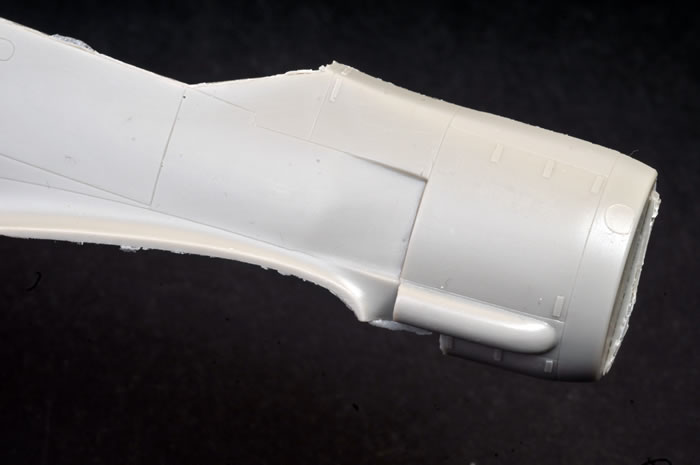
The fuselage is cast in two pieces - left and right halves - with no inserts. Upper cockpit sidewall structural detail is cast onto the inside of the fuselage halves.

The cockpit is fitted out with additional resin parts for the centre console, the two-piece instrument panel with an additional separate part for the coaming, control column, rudder pedals, seat and rear deck.
The instrument dials are recessed circles. You can paint these or use any one of a number of separate dial decals (airscale etc.) available as aftermarket products.
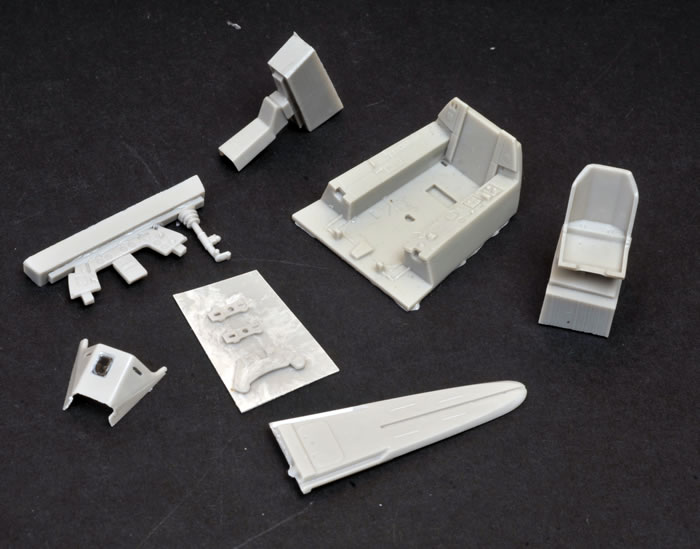
The side consoles on the main cockpit tub part are suitably busy. Harness straps are not included.
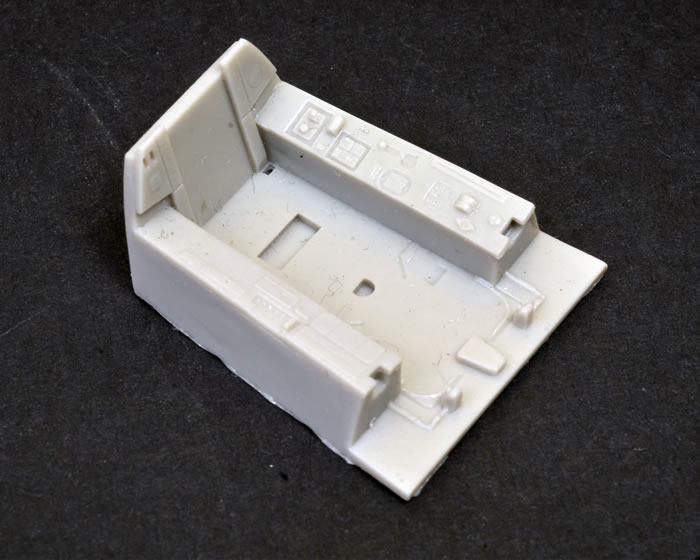
The distinctive oversized spinner and propeller assembly is made up from six resin parts. The external sections of the propeller blades are separate parts that attach to the outside of the spinner; while the hub, pitch collars and interior sections of the propeller baldes are cast as a single part within the large rear section of the spinner. The forward section of the spinner is a separate part, as is the cone that sits inside the spinner.

The wing couldn't be simpler.

It is a full span single part with the wheel well, including the dimpled cover, cast in situ.
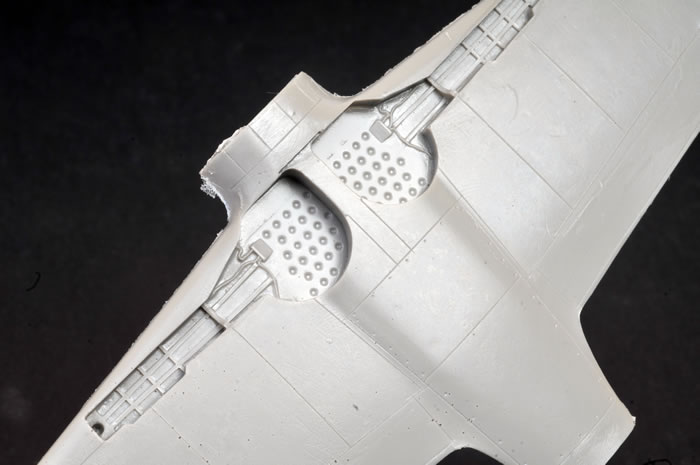
The rudder, horizontal stabilisers and elevators are separate parts.
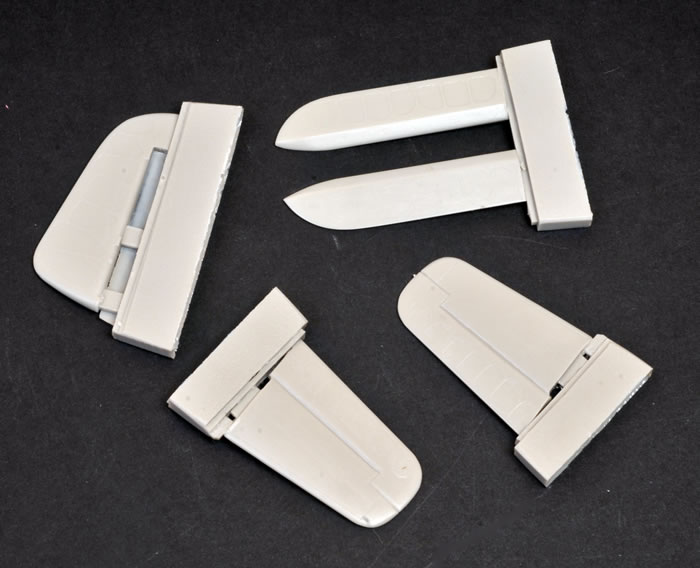
The landing gear is supplied in white metal, with separate resin retraction struts, oleo scissors and covers for the main gear legs.
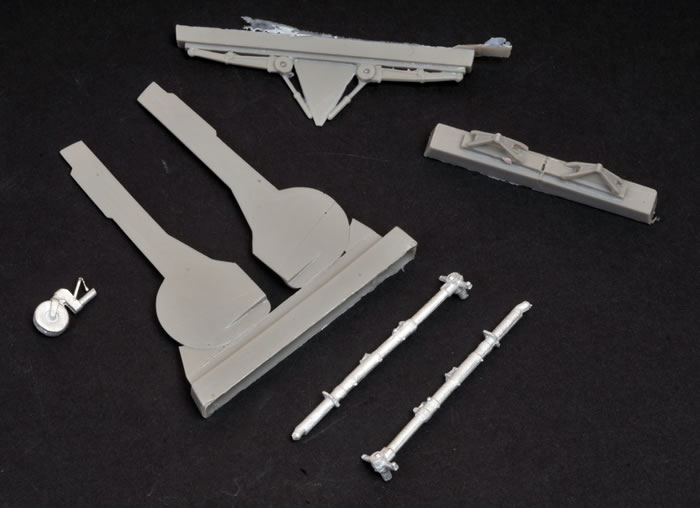
The resin main wheels are very nicely done too. Tyres are smooth.
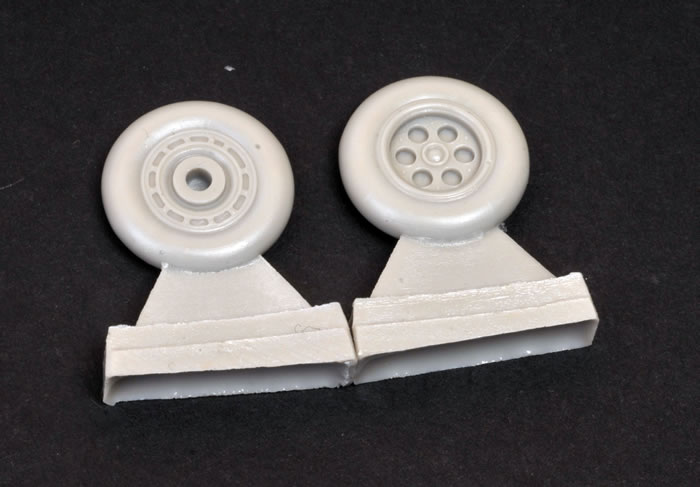
The canopy is a vacform part. A spare is also provided. The parts diagram shows the canopy but its installation is not mentioned in the instructions. It's pretty obvious where it should go though!
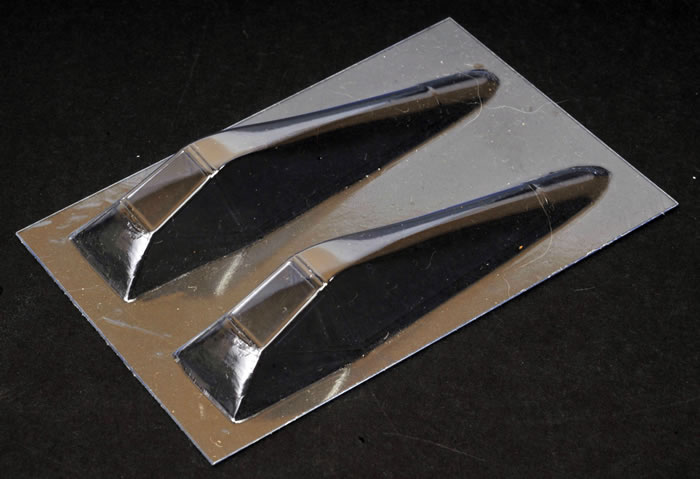
The canopy is supplied in once piece so if you want to display the sliding section open, you'll have to carefully cut the windscreen away.
Marking Options
Markings are provided for the Fw 190 V1 at two points in its career.
-
The first is a bare metal finish with a swastika and red flash on the fin. This dates from summer 1939 while the V1 was at the Focke-Wulf factory airfield at Bremen.
-
The second is from Autumn 1939 during a demonstration to Luftwaffe senior staff at Erprobungsstelle in Rechlin.
The decals are presented on a small sheet.
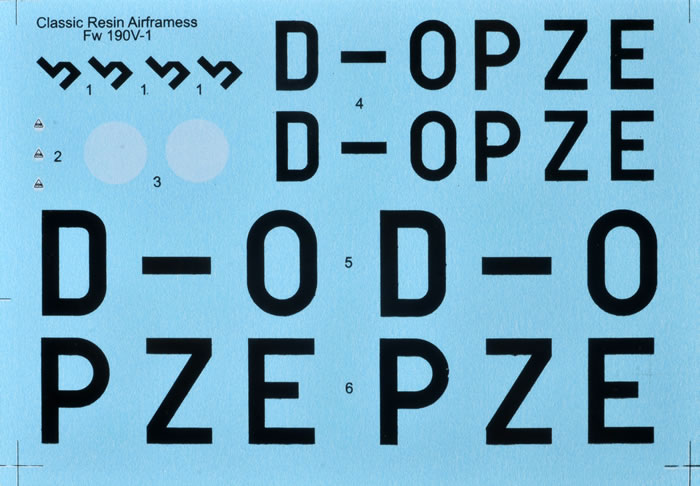
The black markings are crisply printed, thin and glossy in finish. Swastika decals are split into halves to conform to European regulations. The white circles for the fin markings appear to be somewhat translucent. I think it would be safest to mask and spray these circles. You'll need to paint the red band anyhow.
Classic Airframes has delivered a very nice looking kit of this Wurger pioneer as its return subject.
This will be an ideal project for Fw 190 fans or anyone considering their first resin model.
Thanks to Classic Airframes for the sample
Review Text Copyright © 2019 by Brett Green
Page Created 18 April, 2019
Last updated
19 April, 2019
Back to HyperScale Main Page
Back to Reviews Page |
